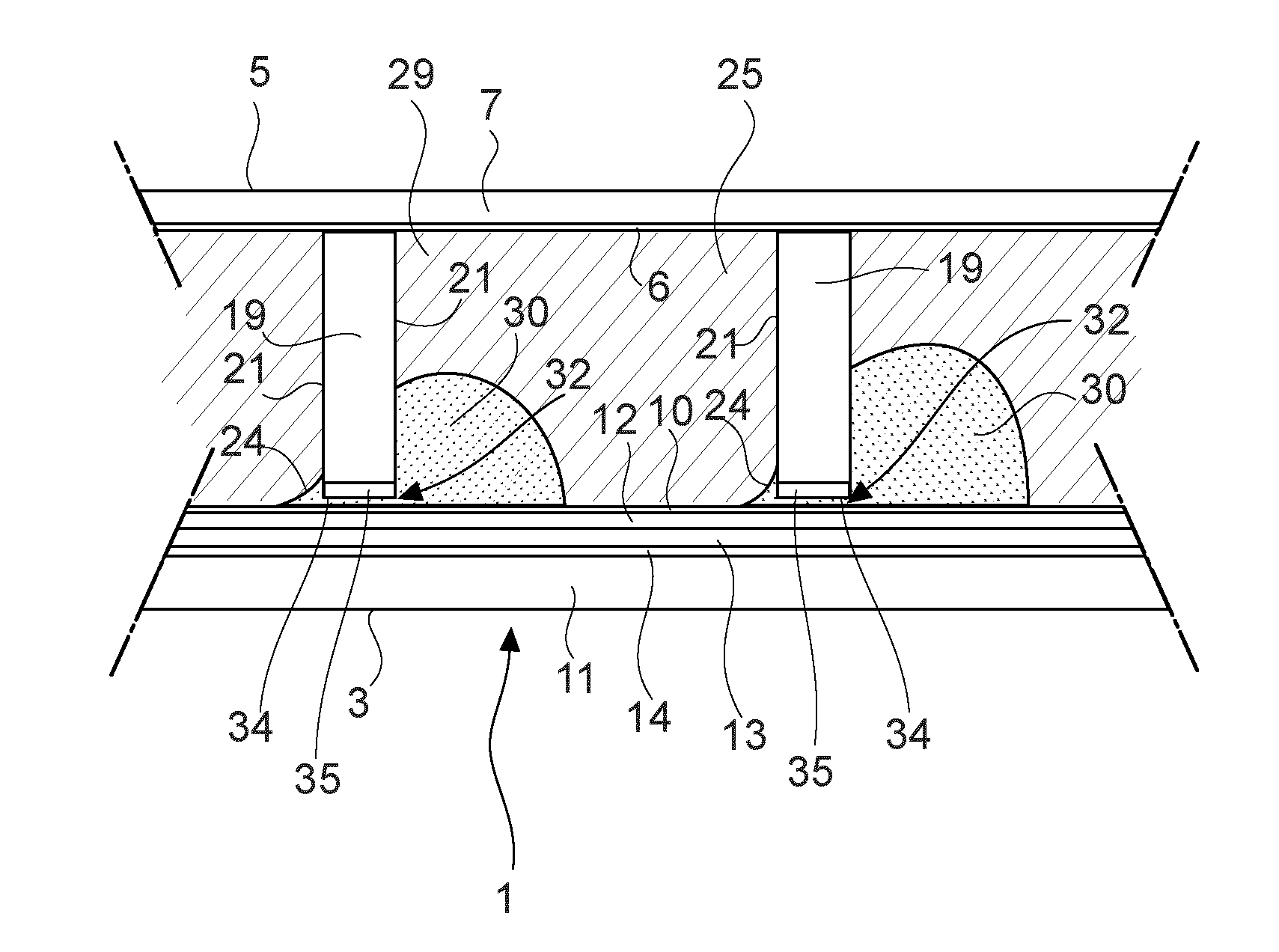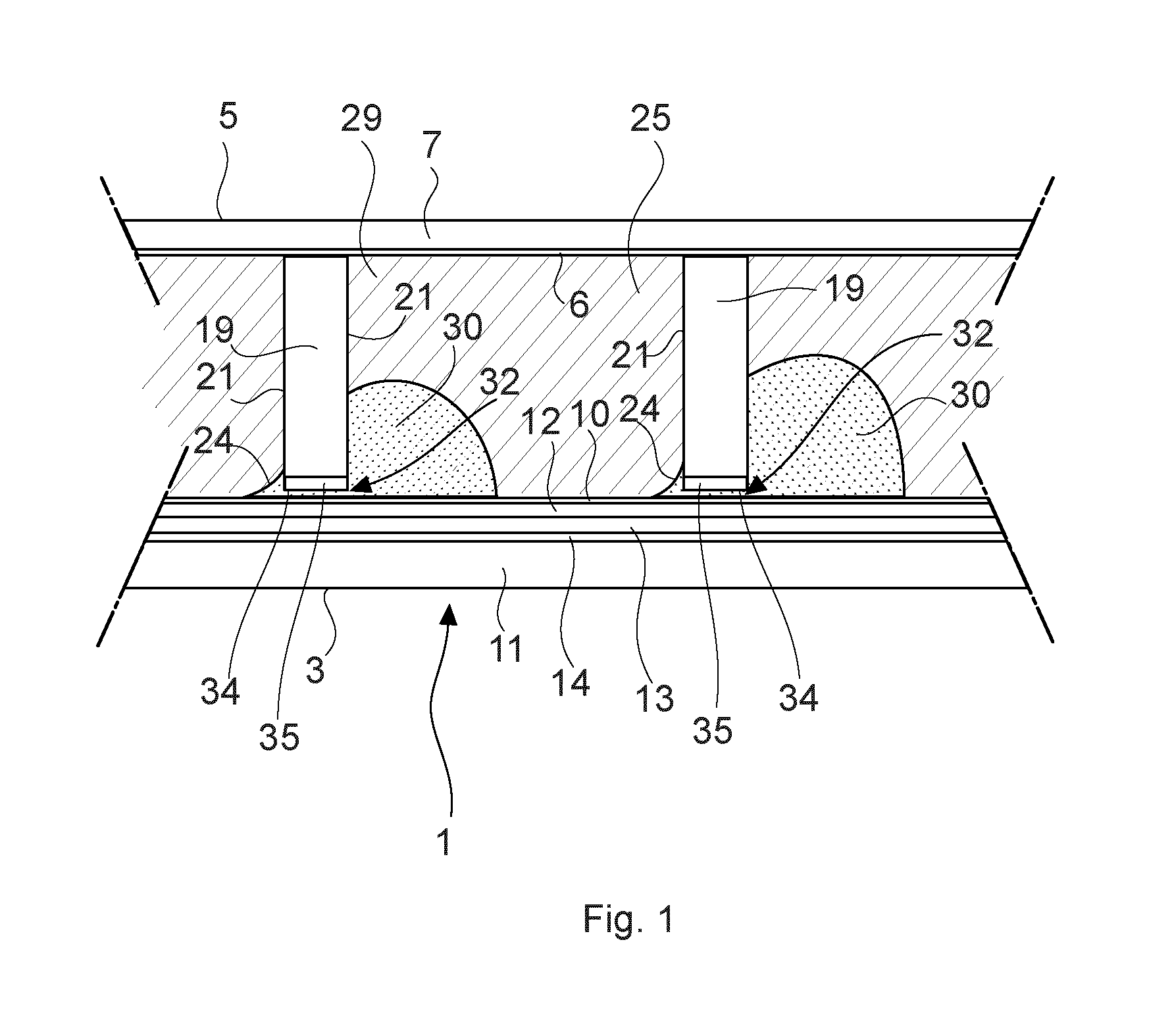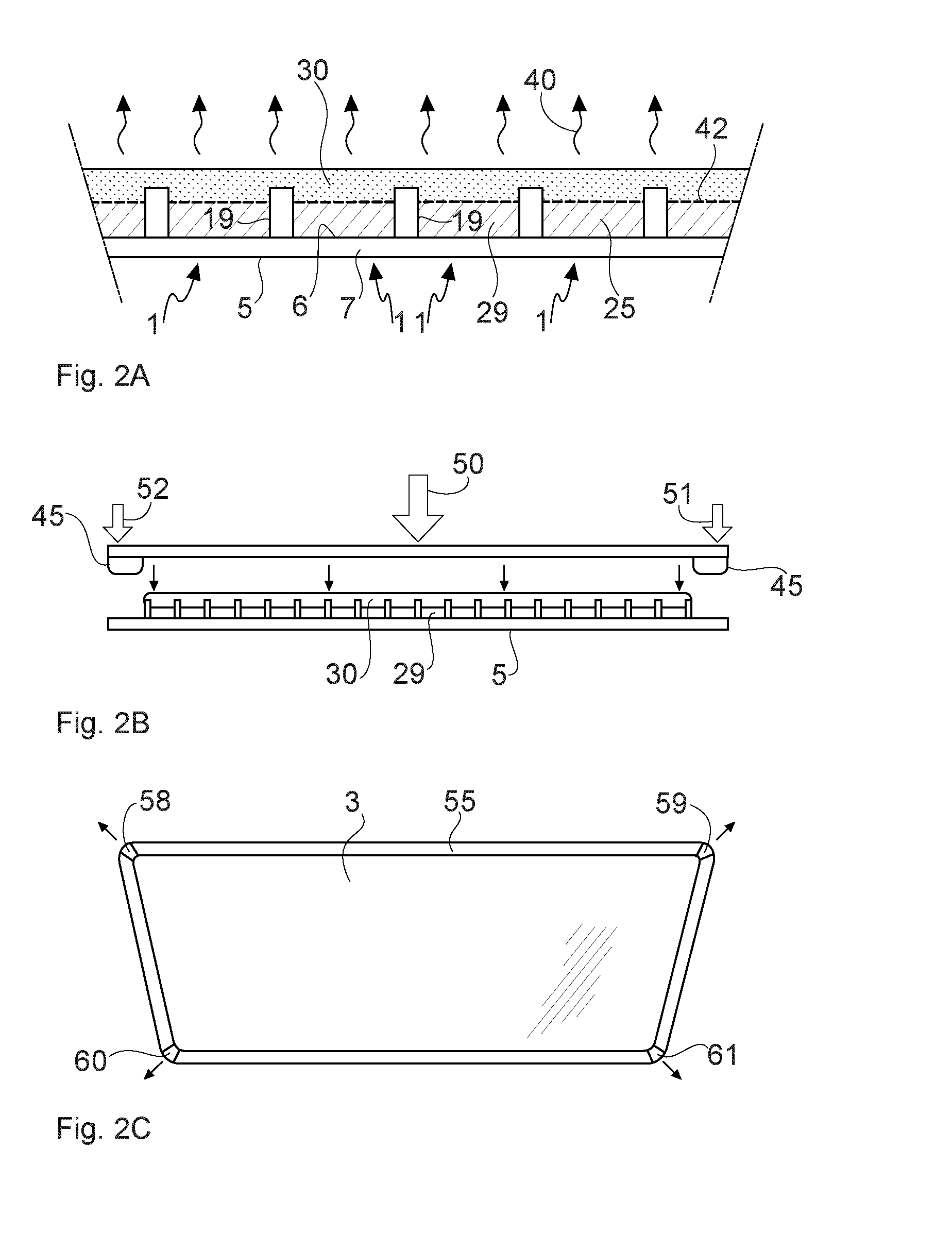Electrowetting optical element
a technology of optical elements and electrowetting, applied in the field of electrowetting optical elements, can solve the problems of destroying the electrowetting element, deteriorating pixel walls, and poor transmissibility of non-polar liquid, so as to improve structural integrity and switching behavior.
- Summary
- Abstract
- Description
- Claims
- Application Information
AI Technical Summary
Benefits of technology
Problems solved by technology
Method used
Image
Examples
Embodiment Construction
[0036]In FIG. 1, an electrowetting optical element or electrowetting element generally indicated with reference numeral 1, and situated between adjacent electrowetting elements, is illustrated. In the electrowetting element 1, a containment space 25 is present between a first electrode layer stack 3 and a second electrode layer stack 5. The first electrode layer stack 3 comprises a substrate 11, an insulating layer 12, a first electrode layer 13 and an optional reflective layer 14 that will be described below. The first electrode layer stack 3 is formed of an electrically conducting material such as indium tin oxide (ITO) and has a hydrophobic interface surface 10 forming the interface with the containment space 25. The hydrophobic interface surface 10 can be formed by a layer of a suitable fluoropolymer, such as CYTOPtm or AF1600tm.
[0037]The second electrode layer stack 5 comprises a superstrate 7 and a second electrode layer 6 supported by the superstrate 7. The second electrode l...
PUM
| Property | Measurement | Unit |
|---|---|---|
| hydrophobic | aaaaa | aaaaa |
| hydrophobicity | aaaaa | aaaaa |
| surface tension forces | aaaaa | aaaaa |
Abstract
Description
Claims
Application Information
 Login to View More
Login to View More - R&D Engineer
- R&D Manager
- IP Professional
- Industry Leading Data Capabilities
- Powerful AI technology
- Patent DNA Extraction
Browse by: Latest US Patents, China's latest patents, Technical Efficacy Thesaurus, Application Domain, Technology Topic, Popular Technical Reports.
© 2024 PatSnap. All rights reserved.Legal|Privacy policy|Modern Slavery Act Transparency Statement|Sitemap|About US| Contact US: help@patsnap.com










